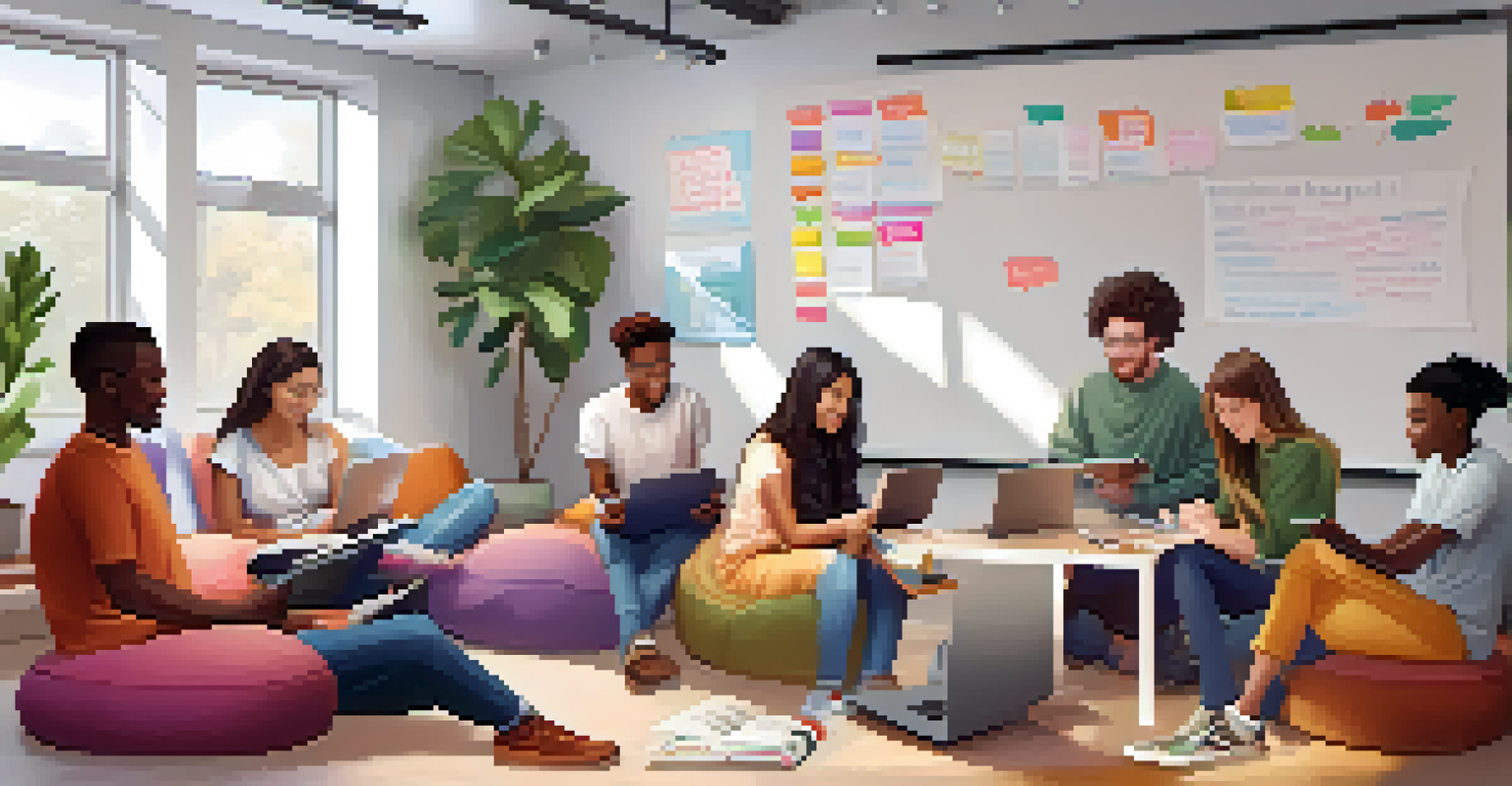Building Digital Literacy: The Educator's Key Role

Understanding Digital Literacy in the Modern Classroom
Digital literacy encompasses a range of skills, from navigating the internet to critically evaluating online information. In today's tech-driven world, it's essential for students to possess these skills to thrive academically and professionally. By understanding what digital literacy means, educators can better prepare students for the challenges of the digital age.
Digital literacy is not an end goal, but a lifelong journey.
Moreover, digital literacy isn't just about knowing how to use technology; it's about understanding the implications of digital interactions. For instance, students must learn about online privacy, security, and the ethical use of information. This holistic approach ensures they become responsible digital citizens.
Ultimately, educators play a pivotal role in shaping students' digital literacy. By incorporating lessons on digital skills into their curriculums, teachers can help students become not just users of technology, but informed and engaged members of the digital world.
The Importance of Teaching Critical Thinking Skills
Critical thinking is a cornerstone of digital literacy, enabling students to analyze and evaluate the information they encounter online. In an era of misinformation, teaching students to question sources and recognize bias is vital. Educators can foster this skill by encouraging discussions around current events and promoting inquiry-based learning.

For example, when students are tasked with researching a topic, they should be guided to consider the credibility of their sources. Assignments that require them to compare multiple viewpoints can deepen their understanding and enhance their analytical abilities. This practice not only improves their research skills but also builds their confidence in navigating complex information.
Digital Literacy is Essential
Students must develop digital literacy skills to navigate the digital landscape effectively and become responsible digital citizens.
By embedding critical thinking into digital literacy education, teachers equip students with the tools they need to make informed decisions. As they become more discerning consumers of information, students are less likely to fall prey to misleading content.
Integrating Technology into Daily Lessons
To build digital literacy effectively, educators should seamlessly integrate technology into their daily lessons. This can range from using educational apps to incorporating multimedia resources that enhance learning. When students engage with technology regularly, they become more comfortable and proficient in its use.
The ability to think critically and creatively is essential in the digital age.
For instance, a history lesson might include virtual reality experiences that transport students to ancient civilizations, or a science class could utilize simulation software to conduct experiments. These interactive approaches not only make learning more engaging but also demonstrate practical applications of digital tools.
As students become familiar with various technologies through their lessons, they develop the confidence to use these tools independently. This hands-on experience is essential for nurturing their digital literacy skills and preparing them for future endeavors.
Promoting Online Safety and Responsibility
With the vast resources available online, teaching students about online safety is crucial. Educators must address topics like personal data protection, cyberbullying, and respectful online communication. These lessons help students navigate the internet safely and responsibly, ensuring their well-being in the digital landscape.
For example, incorporating discussions about privacy settings on social media can empower students to take control of their online presence. Role-playing scenarios can also illustrate the importance of responding appropriately to cyberbullying. By fostering an understanding of online etiquette, educators are helping to create a positive digital environment.
Critical Thinking is Key
Teaching critical thinking enables students to analyze information and recognize bias, which is vital in an era filled with misinformation.
Ultimately, when students grasp the significance of online safety, they become more aware and cautious users of technology. This awareness not only protects them but also contributes to a more respectful and responsible online community.
Encouraging Collaboration Through Digital Tools
Collaboration is an essential skill in both education and the workforce, and digital tools can facilitate this process. Platforms like Google Workspace or Microsoft Teams allow students to work together on projects in real time, regardless of their physical location. This fosters teamwork and communication skills that are vital for success in the modern world.
Educators can design group assignments that require students to utilize these digital tools, guiding them on effective online collaboration. For instance, a project could involve researching a topic collectively, where each student contributes findings and ideas using shared documents. This not only enhances their digital literacy but also teaches them the value of diverse perspectives.
By emphasizing collaboration, educators help students build essential interpersonal skills while enhancing their digital competencies. As they learn to work together effectively, they also prepare for the collaborative nature of today's job market.
Fostering Lifelong Learning Habits
Digital literacy is not a one-time lesson but an ongoing journey. Educators must instill the importance of lifelong learning in their students, encouraging them to continuously seek new skills and knowledge. This mindset is crucial in a world where technology is constantly evolving.
Encouraging students to explore online courses or tutorials can help them take ownership of their learning journey. For instance, if a student shows interest in coding, pointing them to reputable resources can spark a passion for digital creation. This proactive approach cultivates self-directed learners who are adaptable to change.
Online Safety Matters
Educators need to address online safety and responsibility to ensure students understand how to protect themselves in the digital world.
Ultimately, when students embrace lifelong learning, they are better equipped to navigate the ever-changing digital landscape. This adaptability is a key component of digital literacy that will serve them well throughout their lives.
Assessing Digital Literacy Progress Effectively
To understand the effectiveness of digital literacy instruction, educators need to assess students' progress meaningfully. Traditional tests may not suffice; instead, project-based assessments or portfolios showcasing students' digital skills can provide deeper insights. This approach allows educators to see how students apply their knowledge in real-world scenarios.
For example, a digital storytelling project could serve as an assessment tool, where students create and present their narratives using various digital tools. This not only evaluates their technical skills but also their creativity and critical thinking abilities. By observing students in action, educators can better gauge their understanding and proficiency.

By implementing diverse assessment methods, educators can gain a comprehensive view of students' digital literacy skills. This feedback loop helps refine instruction and ensures that students are developing the competencies necessary for success in a digital world.